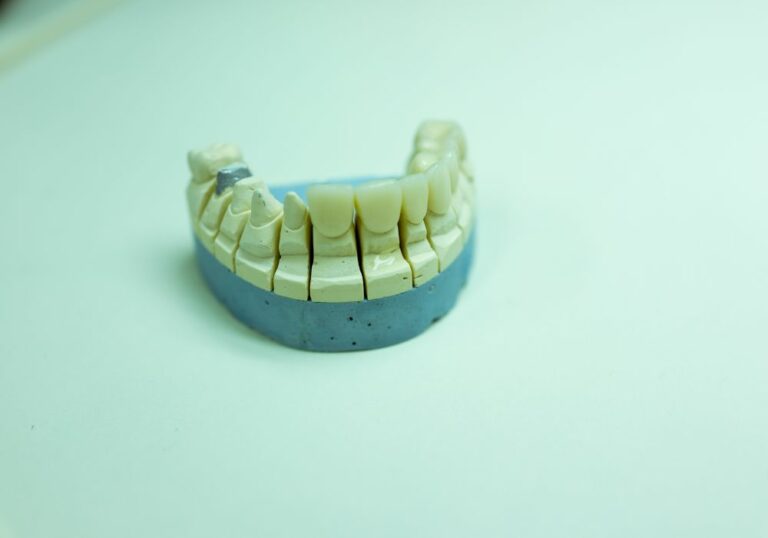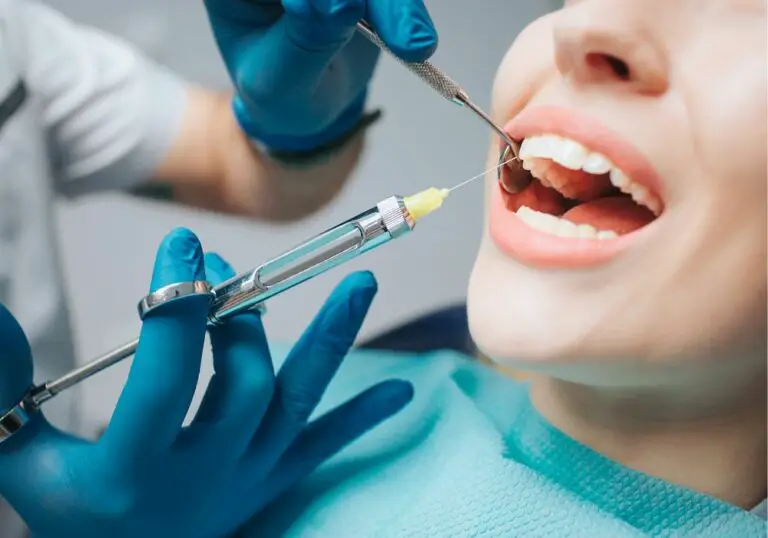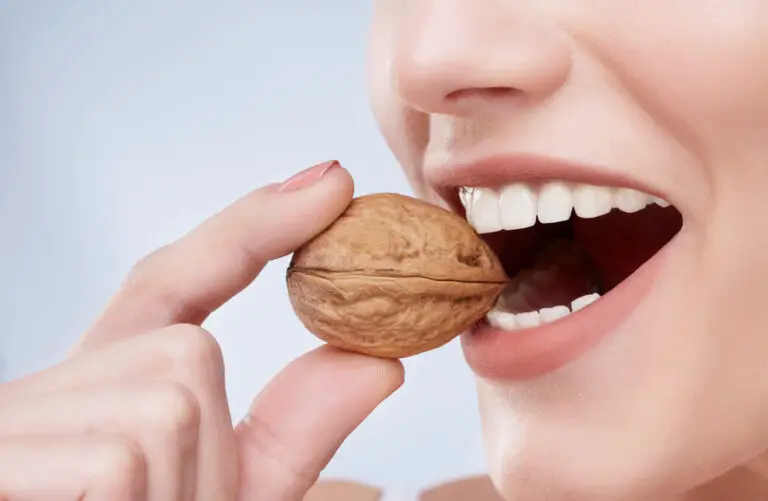Can you put a tooth in almond milk? This is a common question asked by people who have experienced a dental emergency, such as a knocked-out tooth. While milk is often recommended as a suitable storage medium for a dislodged tooth, some people wonder if almond milk can be used as an alternative.
According to dental experts, milk is an excellent temporary preservative for a dislodged tooth because its chemical makeup is compatible with teeth. Milk contains sugars and proteins that help fortify tooth cells, and its antibacterial properties keep the tooth protected until it can be reattached. However, there is no evidence to suggest that almond milk can provide the same benefits as regular milk. While almond milk contains some nutrients that are good for teeth, such as calcium and vitamin D, it lacks the proteins and sugars that make regular milk an effective storage medium for a dislodged tooth.
Understanding Tooth Preservation
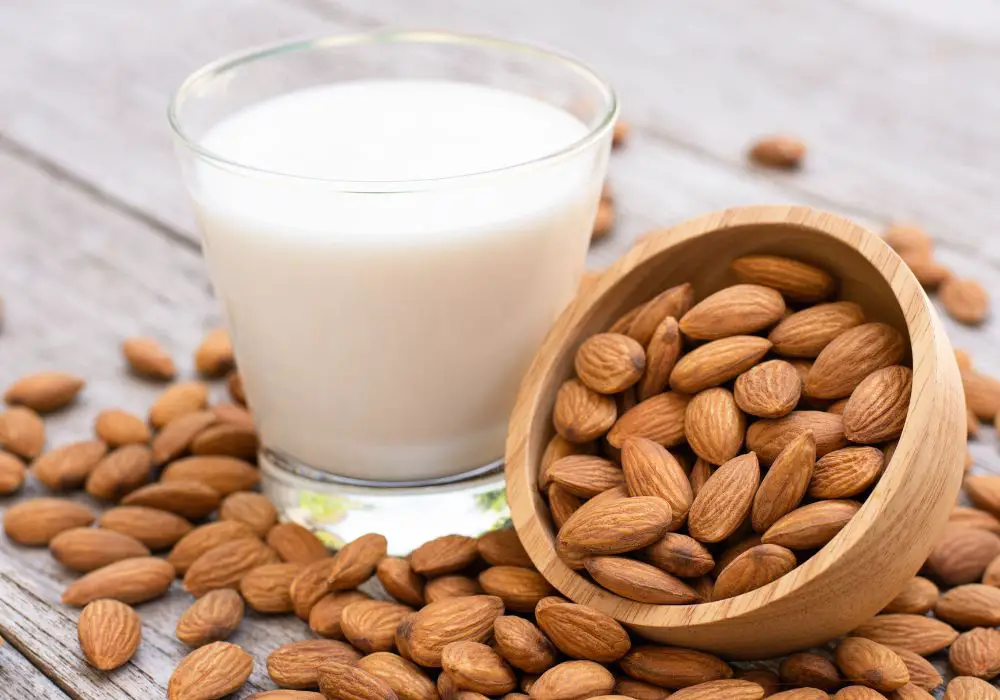
Importance of Tooth Preservation
When a tooth is knocked out, it is important to act quickly to preserve it. The longer the tooth is outside of the mouth, the less likely it is to survive. Tooth preservation can help to keep the tooth alive until it can be reimplanted by a dentist.
Methods of Tooth Preservation
There are several methods of tooth preservation that can be used in an emergency situation. Here are some of the most effective methods:
Reimplantation
If possible, the best method of tooth preservation is to reimplant the tooth back into its socket. This should be done as quickly as possible, ideally within 30 minutes of the tooth being knocked out. Make sure to handle the tooth by the crown (the top part) and not the root. Gently rinse the tooth with water (do not scrub it) and try to reinsert it back into the socket. Hold the tooth in place with a clean finger or by biting down on a clean cloth. Seek immediate dental attention.
Milk
Milk is a good option for preserving a knocked-out tooth. It helps to keep the tooth moist and provides nutrients that can help to keep the cells alive. Place the tooth in a small container of milk and seek immediate dental attention.
Saliva
If milk is not available, another option is to place the tooth in your own saliva. This can help to keep the tooth moist and provides some nutrients that can help to keep the cells alive. Place the tooth in your mouth, between your cheek and gums, and seek immediate dental attention.
Tooth Preservation Kits
Tooth preservation kits are available for purchase online or at some drugstores. These kits contain a special solution that can help to keep a knocked-out tooth alive for up to 24 hours. If you plan to participate in contact sports or other activities where there is a risk of dental injury, it may be a good idea to keep a tooth preservation kit on hand.
Remember, the most important thing is to act quickly. Seek immediate dental attention if you or someone you know has a knocked-out tooth. With prompt treatment and proper tooth preservation, it may be possible to save the tooth and avoid more extensive dental work in the future.
Almond Milk and Tooth Preservation
If you have had a tooth knocked out, you may be wondering what you can do to preserve it until you can get to a dentist. While milk is often recommended for this purpose, you may be wondering if almond milk can be used instead. Here’s what you need to know.
Properties of Almond Milk
Almond milk is a plant-based milk alternative that is made from ground almonds and water. It is often used as a dairy-free alternative to cow’s milk and is popular among vegans and those who are lactose intolerant.
When it comes to tooth preservation, almond milk has some properties that make it a good option. Almond milk is slightly acidic, which can help to neutralize any harmful bacteria that may be present on the tooth. Additionally, almond milk contains calcium and vitamin D, which are both important for tooth health.
Benefits of Almond Milk for Tooth Preservation
Using almond milk to preserve a dislodged tooth can have several benefits. Here are a few:
- Neutralizes harmful bacteria: The slightly acidic nature of almond milk can help to neutralize any harmful bacteria that may be present on the tooth, reducing the risk of infection.
- Provides nutrients: Almond milk contains calcium and vitamin D, which are both important for tooth health. These nutrients can help to strengthen the tooth and promote healing.
- Easy to find: Almond milk is widely available and can be found in most grocery stores. This makes it a convenient option if you need to preserve a tooth in a pinch.
To use almond milk to preserve a dislodged tooth, simply place the tooth in a small container of almond milk until you can get to a dentist. Be sure to handle the tooth carefully and avoid touching the root, as this can damage the delicate tissues.
While almond milk can be a good option for tooth preservation, it is important to note that it is not a substitute for professional dental care. If you have a dislodged tooth, be sure to seek treatment from a dentist as soon as possible.
Comparative Analysis
Almond Milk Vs Other Liquids
When it comes to preserving a knocked-out tooth, there are various liquids that can be used to keep the tooth moist and alive until you can reach an emergency dentist. While milk is the most commonly recommended liquid, there are other options to consider, including almond milk.
One study compared the effectiveness of various liquids in preserving teeth, including bovine milk, soy milk, oat milk, and almond milk. The study found that all of the liquids tested were effective in maintaining the viability of the teeth, with no significant differences in success rates between the different liquids.
However, it’s important to note that the study was conducted on extracted teeth and not on live patients. Therefore, it’s difficult to say for certain whether almond milk would be as effective in preserving a live tooth as it was in preserving the extracted teeth used in the study.
Success Rate of Almond Milk
While there is limited research on the effectiveness of almond milk in preserving knocked-out teeth, anecdotal evidence suggests that it can be a viable option. Almond milk contains sugars, proteins, and antibacterial agents that can help keep the tooth alive and moist until you can reach a dentist.
However, it’s important to note that time is of the essence when it comes to preserving a knocked-out tooth. The longer the tooth is out of the socket, the lower its chances of survival. Therefore, it’s important to act quickly and seek emergency dental care as soon as possible.
In summary, while there is limited research on the effectiveness of almond milk in preserving knocked-out teeth, it may be a viable option when other liquids are not available. However, it’s important to act quickly and seek emergency dental care as soon as possible to maximize the chances of saving the tooth.
Procedure to Preserve a Tooth in Almond Milk

If you have knocked out a tooth, it is important to act quickly to preserve it. One option is to use almond milk to keep the tooth moist until you can see a dentist. Here is what you should do:
- Pick up the tooth by the crown, not the root. Be careful not to touch the root of the tooth.
- If the tooth is dirty, rinse it gently with water. Do not scrub the tooth or remove any tissue fragments.
- Place the tooth in a container of almond milk. Make sure the tooth is completely submerged in the milk.
- If you do not have almond milk, you can use regular milk or a saline solution specifically designed for preserving teeth.
- Do not use water to preserve the tooth, as it can harm the root surface cells.
- If you cannot place the tooth in milk immediately, you can hold it in your cheek pouch to keep it moist.
- See a dentist as soon as possible. The longer you wait, the less likely it is that the tooth can be saved.
Remember, the success of reimplanting a knocked-out tooth depends on how quickly you act and how well you preserve the tooth. Using almond milk or another suitable solution can help keep the tooth moist and increase the chances of successful reimplantation.
Possible Risks and Precautions
When dealing with a knocked-out tooth, it is important to take proper precautions to ensure the best chance of successful re-implantation. While almond milk has been touted for its potential benefits for oral health, there are some possible risks and precautions to keep in mind when using it as a storage medium for a knocked-out tooth.
Firstly, it is important to note that almond milk should not be used as a replacement for proper emergency dental care. If you or someone you know experiences a dental emergency, seek professional help immediately. While almond milk may be a suitable temporary storage solution, it is not a substitute for professional dental care.
Additionally, it is important to ensure that the almond milk used is fresh and does not contain any additives or preservatives that could potentially harm the tooth or surrounding tissues. It is recommended to use plain, unsweetened almond milk for this purpose.
When storing a knocked-out tooth in almond milk, it is important to handle the tooth with care to avoid further damage. Gently rinse the tooth with water to remove any debris, but do not scrub or clean the tooth excessively. Place the tooth in a small container of almond milk and ensure that the tooth is fully submerged.
It is also important to keep the tooth and almond milk at a cool temperature to prevent bacterial growth and decay. Avoid freezing the tooth or storing it in overly warm conditions, as this can damage the tooth and reduce the chances of successful re-implantation.
Overall, while almond milk can be a suitable temporary storage solution for a knocked-out tooth, it is important to take proper precautions and seek professional dental care as soon as possible. With proper care and attention, the tooth may have a better chance of successful re-implantation.
Expert Opinions and Case Studies
When it comes to saving a knocked-out tooth, time is of the essence. The quicker you act, the better the chances of saving the tooth. While putting the tooth in milk is a well-known method, what about almond milk? Can you put a tooth in almond milk?
Experts recommend that if you do not have access to any other preservation media, you can use almond milk as a last resort. Almond milk has a pH level of around 7, which is close to neutral. This makes it a better option than tap water, which can damage the root cells of the tooth.
According to a case study published in the Journal of Endodontics, a 7-year-old girl had her tooth knocked out while playing soccer. The tooth was placed in almond milk for 24 hours before it was re-implanted. The tooth was successfully re-implanted, and the patient had no complications after six months. This case study suggests that almond milk can be a viable option for preserving a knocked-out tooth.
However, it is important to note that almond milk does not contain the same nutrients as cow’s milk. Cow’s milk contains calcium, phosphorus, and vitamin D, which are all essential for healthy teeth and bones. So while almond milk can provide a temporary solution for preserving a knocked-out tooth, it should not be relied upon as a long-term solution.
In summary, if you have access to cow’s milk or a tooth preservation kit, those should be your first options for preserving a knocked-out tooth. However, if you do not have access to any other preservation media, almond milk can be used as a last resort. Remember, the quicker you act, the better the chances of saving the tooth.
Alternatives to Almond Milk for Tooth Preservation
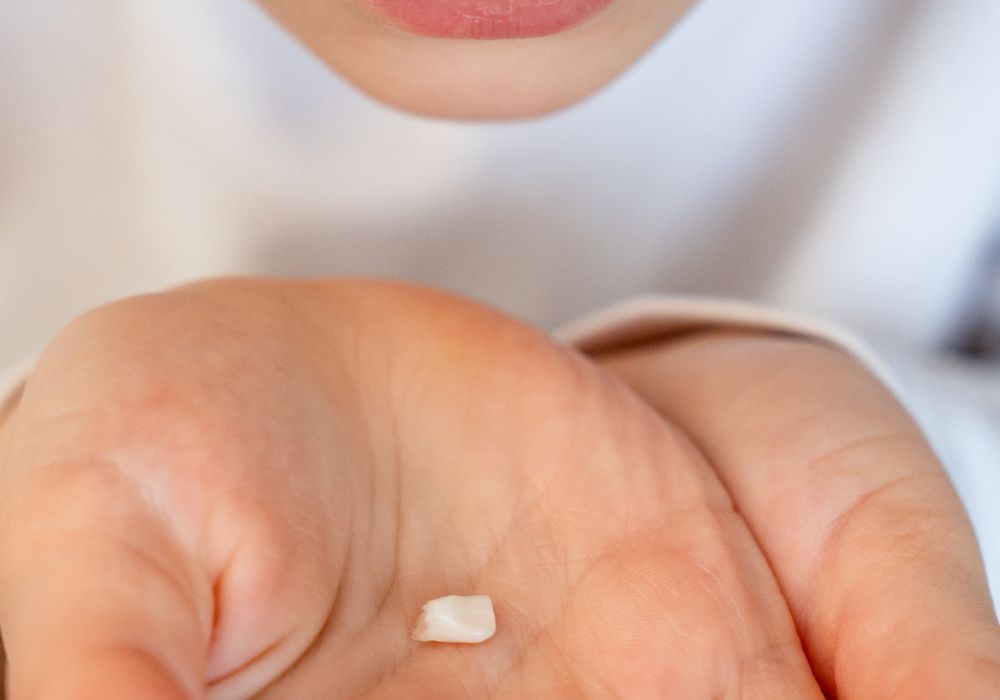
If you don’t have almond milk readily available, there are other options you can use to preserve a knocked-out tooth. Here are a few alternatives:
Cow’s Milk
Cow’s milk is a popular alternative to almond milk for tooth preservation. It contains sugars and proteins that help fortify tooth cells, and its chemical makeup is compatible with teeth. Cow’s milk also has antibacterial properties that can keep the tooth protected until it can be reattached.
Coconut Milk
Coconut milk is another option for preserving a knocked-out tooth. Like almond milk, it contains sugars and proteins that can help fortify tooth cells. Coconut milk also has antibacterial properties that can keep the tooth protected until it can be reattached.
Gatorade
Gatorade is a popular sports drink that can also be used to preserve a knocked-out tooth. It contains sugars and electrolytes that can help keep the tooth alive until it can be reattached. However, it’s important to note that Gatorade should only be used as a temporary solution and not as a long-term storage medium.
Saliva
Believe it or not, your own saliva can be an effective storage medium for a knocked-out tooth. Saliva contains enzymes and other substances that can help keep the tooth alive until it can be reattached. If you don’t have any other storage medium available, simply placing the tooth in your mouth and holding it there can be a good temporary solution.
Water
While water is not the best option for preserving a knocked-out tooth, it’s still better than nothing. If you don’t have any other storage medium available, placing the tooth in a cup of water can help keep it alive until it can be reattached. However, it’s important to note that water should only be used as a temporary solution and not as a long-term storage medium.
Remember, the most important thing you can do when a tooth gets knocked out is to act quickly. The faster you can get the tooth back into its socket or into a storage medium, the better chance you have of saving it. If you’re not sure what to do, contact your dentist or seek emergency dental care right away.
Frequently Asked Questions
How do you keep a knocked-out tooth moist?
If you have a knocked-out tooth, it’s important to keep it moist to increase the chances of saving it. The best way to do this is by placing the tooth in a container of milk. Almond milk is a suitable option if you don’t have regular milk available. Avoid using water or saliva as they can damage the tooth’s root cells and decrease the chances of successful reattachment.
Can a broken tooth be reattached?
If you have a broken tooth, it’s important to see a dentist as soon as possible. Depending on the severity of the break, the tooth may be able to be reattached. However, if the break is too severe, the tooth may need to be extracted and replaced with a dental implant or bridge.
What should I do if I chipped my tooth?
If you chip your tooth, rinse your mouth with warm water and apply a cold compress to the affected area to reduce swelling. If the chip is small, your dentist may be able to repair it with dental bonding. However, if the chip is large, your dentist may recommend a dental crown to restore the tooth’s shape and function.
How can I preserve a tooth that fell out?
If you have a tooth that has been knocked out, it’s important to handle it carefully. Pick up the tooth by the crown (the top part of the tooth) and avoid touching the root. Rinse the tooth gently with water and try to place it back into the socket. If you can’t reinsert the tooth, place it in a container of milk or almond milk to keep it moist and see a dentist immediately.
Can a chipped tooth be repaired?
Yes, a chipped tooth can be repaired with dental bonding or a dental crown. Dental bonding involves applying a tooth-colored resin to the affected area and shaping it to match the rest of your tooth. A dental crown is a cap that is placed over the tooth to restore its shape and function.
What happens if you lose an adult tooth?
If you lose an adult tooth, it’s important to see a dentist as soon as possible. Depending on the situation, your dentist may be able to reattach the tooth or replace it with a dental implant or bridge. If the tooth cannot be saved, your dentist may recommend a partial denture or other tooth replacement options.


